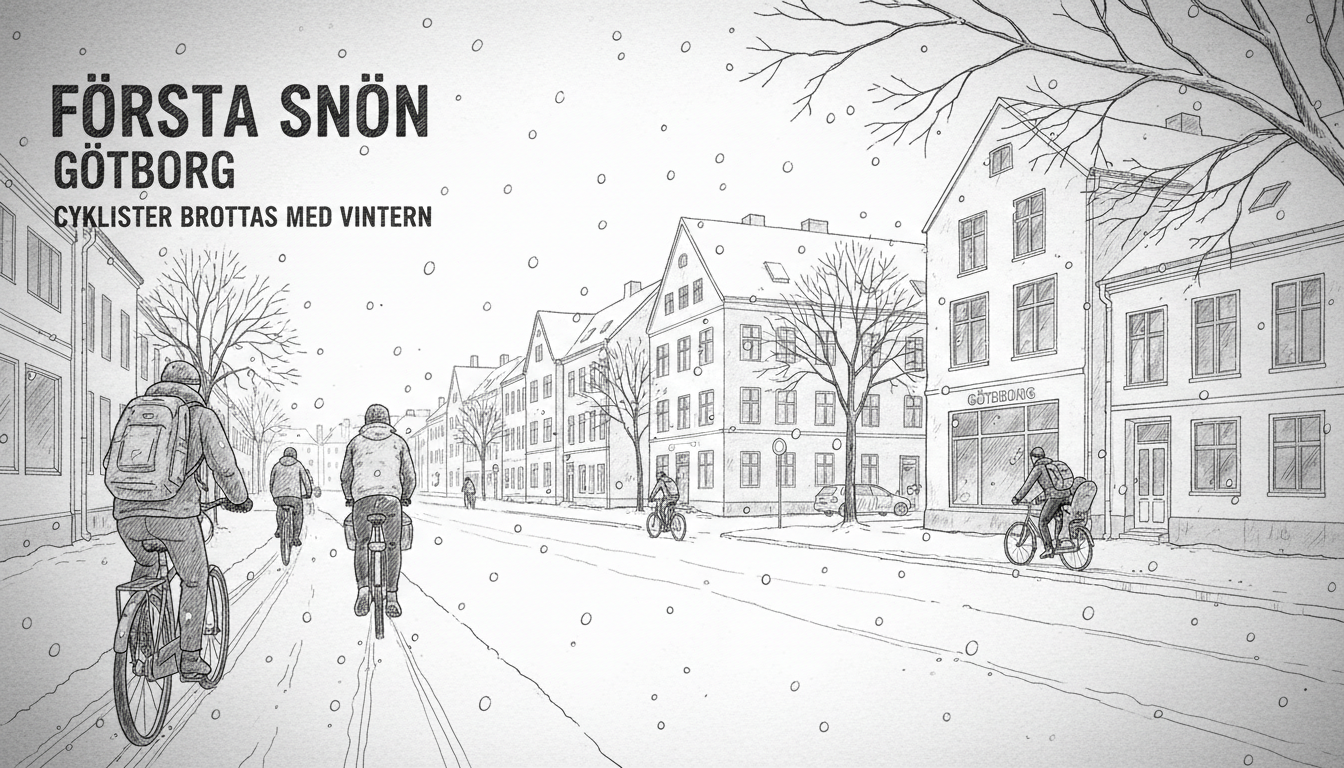Gothenburg residents woke up to the first snowfall of the season today. The Swedish Meteorological Institute issued a yellow weather warning for the area. Despite the advisory, many determined cyclists still pedaled their way to work through the fresh powder.
Oscar Bredby, one of the commuters, expressed his enthusiasm for the winter weather. He said he actually enjoys snow and welcomes its arrival. His positive attitude reflects a common Swedish approach to seasonal changes.
This first snowfall typically occurs in late November or early December in Sweden's second-largest city. The timing aligns with historical weather patterns for the region. Gothenburg's coastal location often results in milder winters compared to northern Swedish cities.
Cycling remains popular throughout Swedish winters despite challenging conditions. Many cities maintain dedicated bike lanes year-round. Local authorities prioritize clearing bicycle paths quickly after snowfalls.
Commuters employ various strategies for safe winter cycling. They often switch to studded tires for better traction on icy surfaces. Dressing in layers with reflective clothing becomes essential for visibility during darker winter months.
Gothenburg's infrastructure supports year-round cycling with maintained paths and proper lighting. The city's flat topography makes cycling practical even during winter months. Many residents view cycling as both transportation and exercise regardless of season.
The yellow warning indicates moderate weather impacts that could affect transportation. Drivers and cyclists alike should exercise additional caution during such conditions. Public transportation typically sees increased ridership during the first significant snowfall.
Winter cycling demonstrates Swedish resilience and commitment to sustainable transportation. The practice aligns with national environmental goals and healthy lifestyle choices. Most Swedish cities continue investing in cycling infrastructure despite seasonal challenges.
How do other Nordic cities compare in winter cycling adaptation? Copenhagen and Oslo face similar seasonal transitions while maintaining high cycling rates. These cities implement coordinated snow removal plans that prioritize bicycle lanes alongside major roads.
Today's snowfall serves as the official transition to winter commuting patterns across southern Sweden. Residents will likely continue adjusting their transportation choices as temperatures drop further. The cycling community typically shares tips and experiences through social media groups and local forums.

